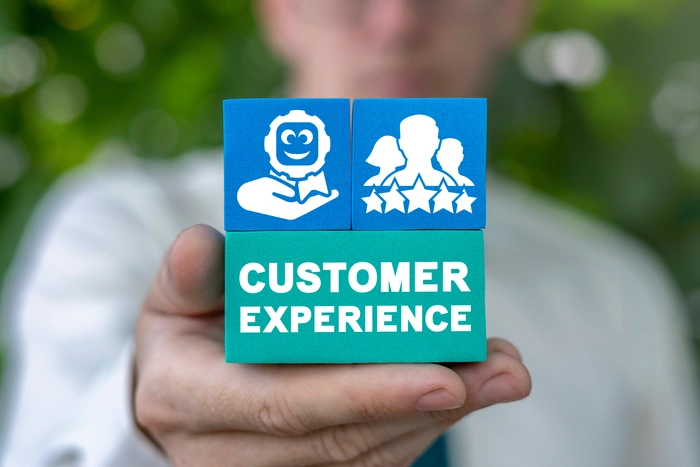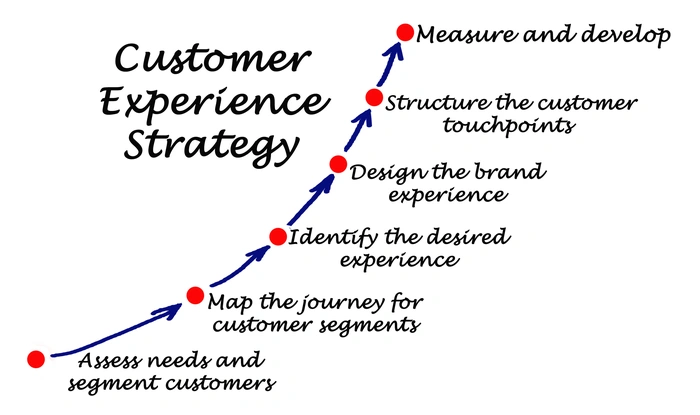Linking Employee Compensation to CX
CX-linked compensation goes back to selecting the right CX metrics that influence employee behavior, then designing and delivering surveys to collect and deliver those measurements.
How to Link CX to Employee Compensation
Tying employee compensation – especially for frontline employees – to the customer experience (CX) is nothing new. And that is not surprising, given the business benefits of delivering a superior CX. According to Forrester:
- Companies leading in CX also show growth by 5.1 times.
- Customers are willing to pay 4.5 times more for an excellent customer experience.
- The operating margin for companies with superior CX is 4.1 times larger than the margin for other companies.
However, that research also shows that 84% of companies aspire to be CX leaders, but only 1 in 5 deliver good or excellent customer experiences. Why aren’t more companies delivering on this promise if the benefits are great? Designing a compensation plan that rewards employees for delivering great customer experiences are not as easy as it may seem.

Design a Reward Structure Linked to CX
First and foremost, a good compensation plan must reflect the organization’s strategic goals. Without that linkage, employees will not understand why you would reward them for performing the actions in the program. If you do indeed reward them for the wrong behaviors, there could be a negative impact on CX. Here are additional requirements for an effective reward structure:
- Long-lasting impact on staff. A good CX-linked compensation plan changes the behavior of the impacted employees.
- Longevity. The compensation and reward plan must be able to withstand change. And that means both changes in the market and workforce trends. Of course, the program should also be able to withstand minor adjustments, as change is inevitable.
- A bonus or incentive needs to look attainable to most employees it covers. If it does not appear possible, it will not impact employee motivation or CX delivery.
- Balance – Part One. A sound CX-linked reward system needs to balance the quality of CX delivery against productivity.
- Balance – Part Two. In addition to quality and productivity, a highly effective compensation plan will balance team and individual incentives.
- The compensation plan should reinforce the desired organizational culture and values.
- Avoid unintended consequences. Ensure that the incentive plan does not allow for fraudulent behavior (self-reporting) or focus too much on the metrics over the desired behavior. Sadly, we’ve all heard the stories about employees pestering customers to submit positive reviews!
Although most employees find the concept of higher pay appealing and compelling, it is also essential to include non-monetary rewards and recognition in the incentive program. After all, an incentive program with only monetary payouts, huge ones, may be difficult to sustain through economic downturns.

Measuring CX Effectively
Of course, the heart of any CX-linked compensation program goes back to selecting the right CX metrics that can influence employee behavior and then designing and delivering the surveys to collect and deliver those measurements. There are no one-size-fits-all CX metrics (although there are many examples to consider). The key is finding those metrics that work for your organization. Here are some tips:
- Metrics Employees Understand and Can Impact. Select metrics that are meaningful to employees and that they understand how they can impact.
- Individual Performance. Focus on metrics that allow each individual to evaluate their performance against previous performance, not against the performance of others. When you are trying to improve CS, it is essential that individuals achieve improvement and that the sum of individual progress lifts team performance.
- Keep Measurements Simple. Individuals must understand and recognize their performance to know how to improve. Simple, clear metrics remove ambiguity from results and eliminate the perception of bias. [This is also critical for those administrating the compensation program. It should be easy and fast for them to calculate the payouts.]
- Accurate and Timely Reporting – Well-designed CX reporting depends on timely and accurate data. Develop and maintain a solid reporting system to store, analyze and provide timely reports.
Performance that you reward is likely to be repeated. That’s why we have CX-linked incentive plans! However, employees will need time (and coaching) to achieve optimal CX performance. Employees will naturally focus on behaviors that get them the most bonus, so the incentive program must be well-designed, monitored, regularly reviewed, and in place over time. Not doing so will not deliver the expected and desired results and could negatively impact employee morale and motivation.
How is your CX-linked comp plan working?
Let’s talk, we can help you design a program that blends customer experience and employee experience for the right balance.
Follow
OvationMR

Bart Borkosky
Author
Bart is Chief Research Officer at OvationMR and is responsible for Online Panel and Online Sample Data Quality. He also consults with clients on design for various types of online research campaigns and political polling. Bart can be reached at Bart.Borkosky@ovationmr.com
To learn more about OvationMR Business CX and NPS Solutions, Online Sampling, and Online methodologies for ensuring your success, you can visit Panel Quality & Recruitment or Download 2021 PanelBook or contact us at info@ovationmr.com

Need help with new insights?
We are ready to offer you:



